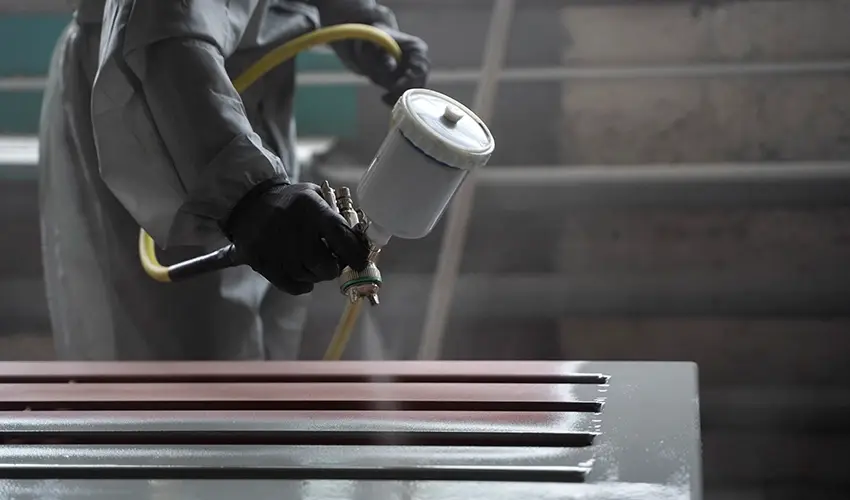Spray paints come in various types and applications. One of the key elements in the performance of these sprays is the propellant gas, which helps distribute the contents of the spray evenly and efficiently onto the surface. Choosing the right propellant gas impacts the quality and uniformity of the paint application while enhancing the safety and efficiency of the product. In this article, we will explore the use of propane in spray paint as one of the common propellant gases, explain the reasons for its selection, and finally provide important tips for the safe and proper storage of sprays containing propane.
What is a Propellant Gas?
A propellant gas is a gaseous substance used in sprays to create pressure and ensure the even release of the contents. This gas is typically inert and does not react chemically with the materials inside the spray. Propellant gases such as propane, isobutane, and others are chosen based on the type of application and play a critical role in controlling flow, spray power, and product performance. In addition to functionality, safety, environmental compatibility, and compatibility with the spray’s contents are also important criteria when selecting a propellant gas.
Characteristics of a Suitable Propellant Gas
- Appropriate Vapor Pressure: The vapor pressure of a propellant gas must be balanced—neither too low, which would result in insufficient spray power and incomplete coverage, nor too high, which could make spray control difficult and pose risks such as the explosion of the spray container due to heat or impact.
- Environmental Impact: Propellant gases should have minimal environmental impact, meaning they should not be greenhouse gases or contribute to the destruction of the ozone layer.
- Compatibility with Spray Contents: The propellant gas must not react with the chemical components inside the spray, as such reactions could alter the properties of the contents, reduce product quality, or even pose safety risks.
- Safety: For safety and to prevent personal injury or property damage, the propellant gas should have an appropriate vapor pressure, typically between 2 to 8 bar, and maintain stability under various temperature conditions.
Advantages of Using Propane in Spray Paint
- Provides powerful and uniform spray application due to the high vapor pressure of propane.
- Chemical compatibility with the components inside the spray paint.
- Performs well in low-temperature conditions.
- Suitable for industrial and heavy-duty applications.
- Readily available and cost-effective.
Propane or Isobutane: Which Propellant Gas is More Suitable?
Both propane and isobutane are used as propellant gases in spray paint, but their applications vary depending on the specific needs. Isobutane, due to its lower vapor pressure, provides less spraying power and is suitable for applications requiring greater control over paint spraying and precision in painting, such as artistic work, handicrafts, or precise painting of small surfaces. In contrast, propane, with its higher vapor pressure, offers greater spraying power and is preferred for situations requiring wider coverage, faster painting, and usage in low-temperature conditions. These characteristics make propane more suitable for industrial applications and larger-scale or faster painting tasks, such as painting vehicles or large surfaces. Ultimately, the choice between these two gases depends on the type of application and the need for precision or spraying power.
Important Tips for Using Spray Paint Containing Propane
- Due to the flammability of propane, spray paint should be used in well-ventilated areas to prevent the accumulation of propane and reduce the risk of explosion or fire.
- To avoid the dangers of propane ignition, spray paint must be kept away from sparks and heat sources.
- To ensure the uniform mixture of paint and propellant gas, the spray can should be shaken thoroughly several times before use.
- The spray paint can should be stored at an appropriate temperature (between 10 to 25 degrees Celsius).
- Store the spray paint in a dry and cool place, away from direct sunlight, and avoid puncturing or burning the can, even after it is empty.
Environmental Impacts of Propane
Propane gas, when released into the atmosphere, has a short lifespan and decomposes quickly, which limits its accumulation in the environment. Unlike harmful gases such as CFCs, propane does not contribute to ozone layer depletion and is therefore considered safer for the environment in this regard. However, propane is derived from the refining of crude oil and the extraction of natural gas, processes that are typically associated with pollutant emissions and environmental damage. Additionally, when propane burns, it produces carbon dioxide, one of the most significant greenhouse gases, contributing to global warming.
Conclusion
In this article, we examined the reasons for using propane in spray paint. Due to its high vapor pressure, propane provides strong spraying power and wide coverage, making it an ideal choice for industrial applications that require fast and extensive spraying. However, propane also has drawbacks, which necessitate adherence to safety guidelines for the storage and use of these sprays.

